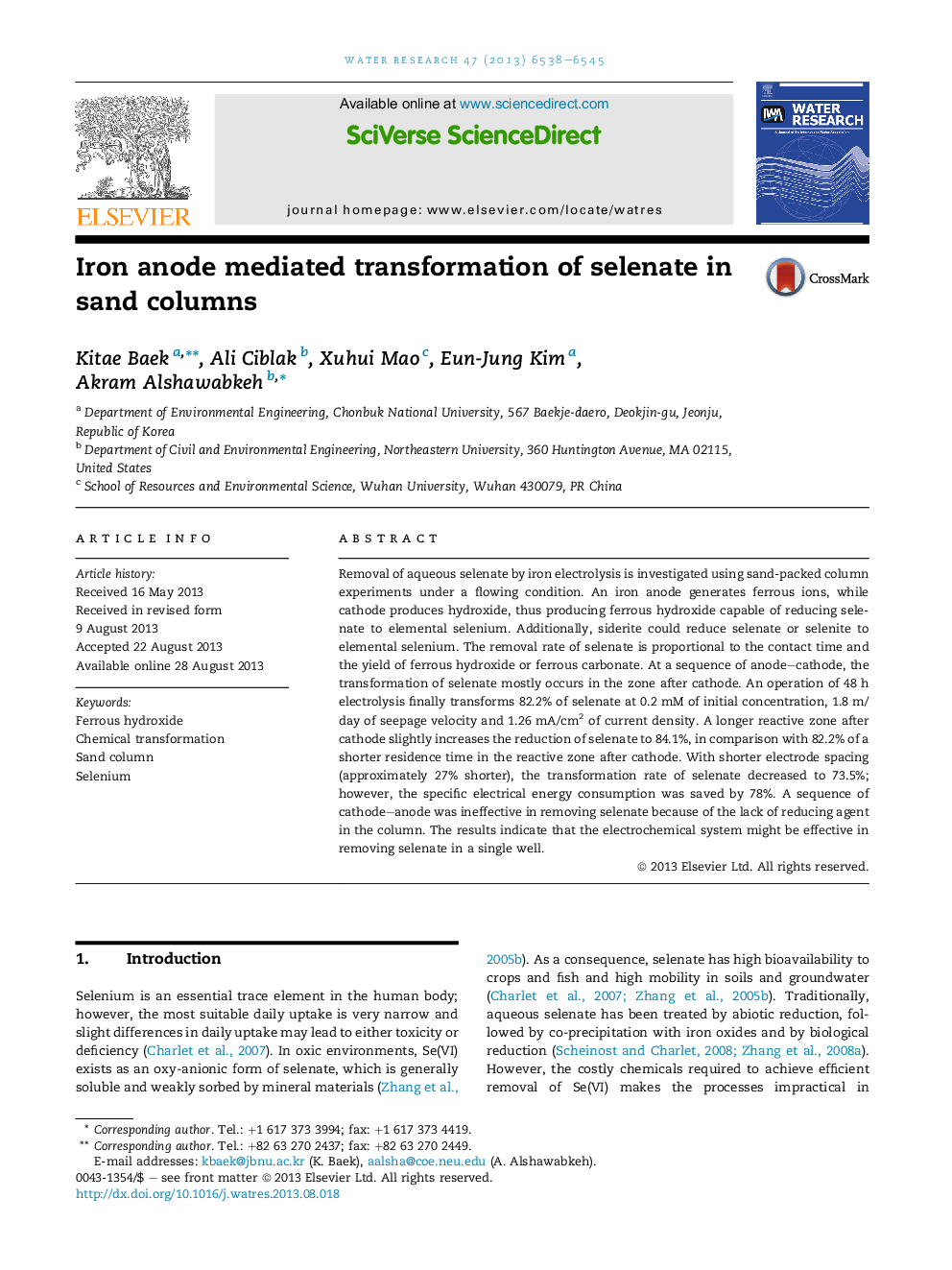| Article ID | Journal | Published Year | Pages | File Type |
|---|---|---|---|---|
| 4481905 | Water Research | 2013 | 8 Pages |
•Selenate was reduced to Se(0) in sand-packed column under flowing condition.•Single well type was more effective to reduce selenate.•A sequence of cathode–anode lowered the formation of reducing agent.
Removal of aqueous selenate by iron electrolysis is investigated using sand-packed column experiments under a flowing condition. An iron anode generates ferrous ions, while cathode produces hydroxide, thus producing ferrous hydroxide capable of reducing selenate to elemental selenium. Additionally, siderite could reduce selenate or selenite to elemental selenium. The removal rate of selenate is proportional to the contact time and the yield of ferrous hydroxide or ferrous carbonate. At a sequence of anode–cathode, the transformation of selenate mostly occurs in the zone after cathode. An operation of 48 h electrolysis finally transforms 82.2% of selenate at 0.2 mM of initial concentration, 1.8 m/day of seepage velocity and 1.26 mA/cm2 of current density. A longer reactive zone after cathode slightly increases the reduction of selenate to 84.1%, in comparison with 82.2% of a shorter residence time in the reactive zone after cathode. With shorter electrode spacing (approximately 27% shorter), the transformation rate of selenate decreased to 73.5%; however, the specific electrical energy consumption was saved by 78%. A sequence of cathode–anode was ineffective in removing selenate because of the lack of reducing agent in the column. The results indicate that the electrochemical system might be effective in removing selenate in a single well.
Graphical abstractFigure optionsDownload full-size imageDownload high-quality image (119 K)Download as PowerPoint slide
